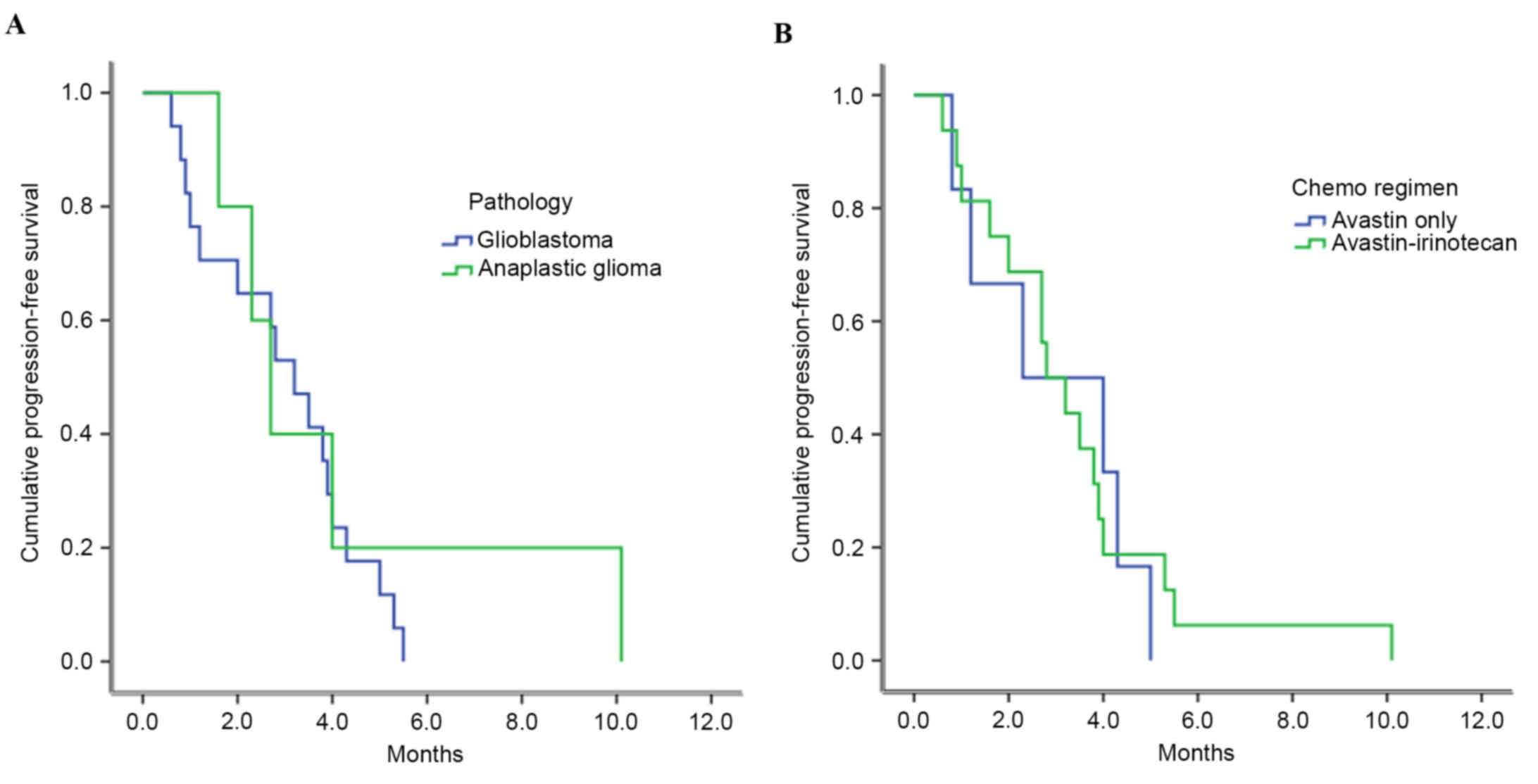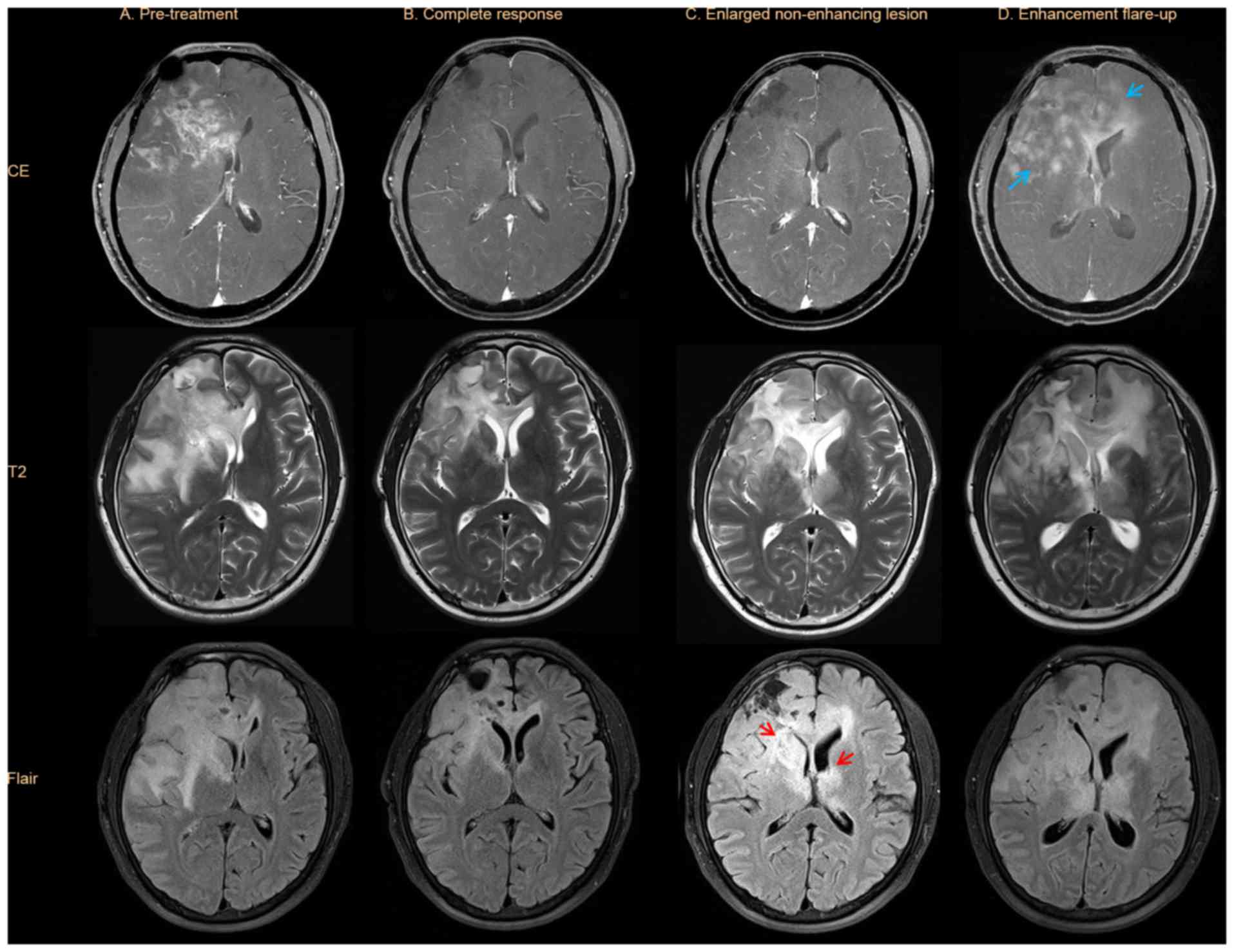Disease progression patterns of bevacizumab responders with recurrent malignant gliomas
- Authors:
- Published online on: July 20, 2017 https://doi.org/10.3892/ol.2017.6630
- Pages: 3529-3535
-
Copyright: © Kim et al. This is an open access article distributed under the terms of Creative Commons Attribution License.
Metrics: Total
Views: 0 (Spandidos Publications: | PMC Statistics: )
Total PDF Downloads: 0 (Spandidos Publications: | PMC Statistics: )
Abstract
Tumor progression in patients with recurrent malignant glioma who respond to bevacizumab (BEV) is difficult to assess. The current study reviewed the clinical and radiological results of patients following a BEV‑based chemotherapy regimen, and evaluated disease progression patterns in patients who responded to BEV therapy. From August 2011 to November 2015, 24 patients (18 glioblastoma cases and 6 anaplastic astrocytoma cases) were treated with BEV‑based chemotherapy. In total, 6 patients were treated with BEV alone and 18 patients were treated with BEV combined with irinotecan. The male‑female ratio was 10:14, and the median age was 47.5 years (range, 29‑69). Patient performance status (PS) was classified using the Eastern Cooperative Oncology Group PS scores as follows: PS 1 (n=3), PS 2 (n=9), PS 3 (n=9) and PS 4 (n=3). Treatment‑associated complications were also analyzed according to the National Cancer Institute Common Terminology Criteria for Adverse Events version 4.0. Treatment responses were estimated using the Response Assessment in Neuro‑Oncology Criteria. Progression‑free survival (PFS) following treatment, patterns of disease progression and overall survival following treatment failure were also analyzed. The median PFS was 2.8 months (range, 0.6‑10.1). In total, 2 patients did not continue treatment due to rectal bleeding and severe hematologic toxicity. Amongst the BEV responders (n=16, 72.7%), there was clinical deterioration without significant radiological progression in 2 patients (n=2, 12.5%). Radiological progression of non‑enhancing lesions without enhancement flare‑ups was observed in 6 patients (42.9%). A total of 3 of those lesions were diffuse and 3 were focal. Increased lesion enhancement was observed in 8 patients (57.1%). Of the non‑responders (n=6, 27.3%), diffuse enlargement of non‑enhancing lesions was detected in 2 patients and an increase in lesion enhancement occurred in 4 patients. BEV complete responders (n=3) radiologically progressed with enlarged T2/fluid attenuation inversion recovery lesions without enhancement, followed by enhancement flare‑ups. Following BEV treatment failure, 8 patients received a number of adjuvant treatments and the overall survival was 4.5 months (range, 0.4‑34.0). Clinical symptoms and radiological alterations of non‑enhancing lesions must be evaluated in order to assess tumor progression in the BEV responders, particularly in patients who have achieved complete remission.













